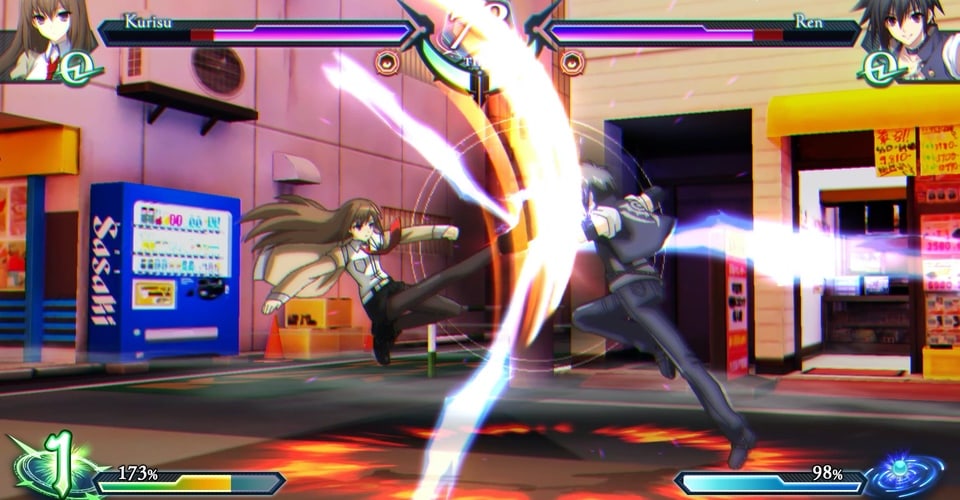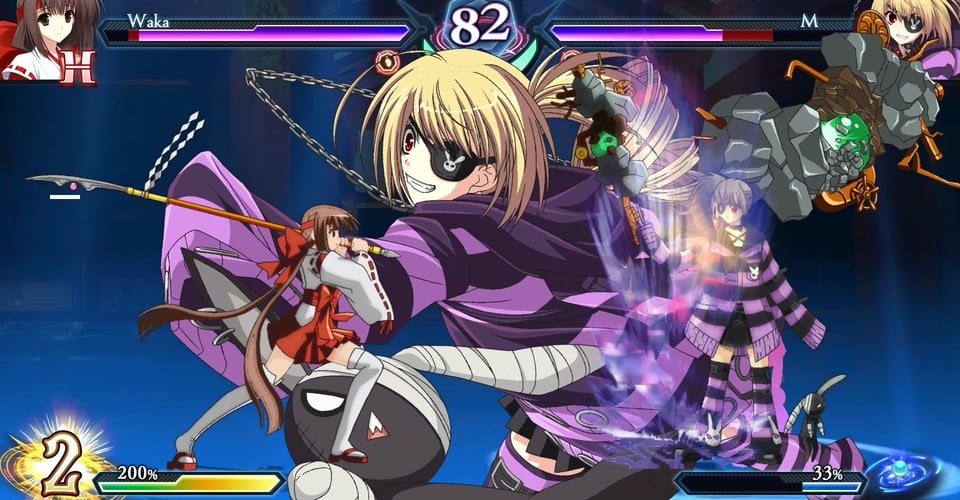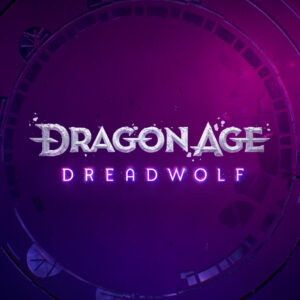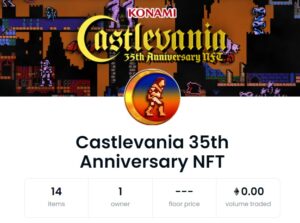Have you noticed the fighting game boom we’ve had over the last year? It’s a bit different than the resurgence sparked by Street Fighter IV back in 2008, or Tekken 7 back in 2017. There’s a wave of retro love sweeping the genre right now, partly due to the conversation about rollback net-code in fighting games. As developers do their best to lock in optimal net-code for their brand new titles, we’ve also seen classic games revived with fresh net-code or entire re-releases. It’s a great opportunity for forgotten classics or overlooked cult gems to get a second shot at life, and Phantom Breaker: Omnia is the latest example of that.
It’s completely fair if you’ve never played or even heard of Phantom Breaker, before – it was originally a Japan exclusive Xbox 360 release in 2011 from visual novel studio Mages. There have been a few rereleases and updated versions of the title since then that added new characters, gameplay mechanics, and story bits, but it’s only thanks to Rocket Panda Games that the latest upgraded version of the game has finally seen a worldwide release. In terms of localisation, this isn’t a rush job either – every piece of fight audio and story mode dialogue has been dubbed in English by an all-star cast, and they’re working with a fun and fluid script that adds plenty of energy to the huge cast of 22 playable characters.
Rather than taking the form of a crossover fighter full of characters from Mages games, like Nitroplus Blasterz from visual novel company Nitroplus did, Phantom Breaker is an original story full of brand new characters and tons of absurd plot points. Essentially, a big bad dude named Phantom has bestowed random people with superpowers and is forcing them to fight each other in order to generate enough special phantom energy to open up a portal to an alternate reality. Or something. It’s a dumb mess, but some of the characters involved are really charming, and the fact that there’s a bevy of individual character stories to play through instead of a cut-and-dry Arcade mode is a delight. There is an Arcade mode as well, but it’s pretty bad – please do not make me fight every character in the cast when there’s nearly two dozen characters in it!

Even more surprising than the depth of the story in Phantom Breaker: Omnia is the depth of the gameplay. Fans of clunky-looking anime fighters with fast and flashy combat will be in heaven here. To start, each character has multiple Styles to choose from, just like in Melty Blood or Capcom vs. SNK 2. Quick Style makes you a glass cannon capable of lengthy combos, while Hard Mode beefs up your defenses and base damage, but lowers your combo potential so you’re more focused on beefy individual hits. This release debuts Omnia Style, striking a balance between the other two at the cost of disabling a few of the advanced meter-burning mechanics available to you. I love this Style system because the choices really feel like they matter, but are also simple enough choices to make that even a beginner could wrap their head around it. Playing a slow hulking monster or a ranged zoner? You definitely want Hard Style.
Once you’ve got your Style selected, Phantom Breaker: Omnia doesn’t ask much of you in terms of raw inputs – you’ve got three standard attacks and a special attack button, with all your special attacks accessible by just pressing one or two buttons and a stick in one direction. Quarter circles and Z inputs don’t exist here, and almost the entire cast uses the same inputs for their special attacks. If you’re a button masher or just a casual player trying their best, the basic tools here are approachable enough for you to bust some fun moments out. Seasoned FGC vets have a wild amount of advanced tools to work with, though – a combo-extending Overdrive mode, a Third Strike style dashing-parry, Counter Bursts, combo breakers, and more.

The fighting in Phantom Breaker: Omnia is fun and flashy and well put together, and that’s the most important part of a fighting game, but I can’t help but be dismayed by the major flaws sprinkled throughout the rest of the package. The game is a bit of a mess on PC, with barely any graphical/resolution options and a fullscreen mode that gets messed up if you open Steam Overlay.
Worse is the fact that the game seems to incorrectly map Xbox One controller inputs in-game, and provides no way of remapping the affected buttons. Your only way around it is to download a community-made Steam controller config that fixes the issue. Another bizarre and frustrating choice is that the command list isn’t accessible during fights or training. You can only see it by digging to the back-pages of an obtuse set of PDFs on the main menu that are the closest thing the game has to a tutorial.
Aesthetically, the game is kind of all over the place, too. While most characters are rendered with drawn 2D sprites, a chunk of the cast is rendered with flat images captured from 3D models. It’s what you would see out of games like King of Fighters XIII or oldschool Mortal Kombat, but it’s incredibly offputting when they’re alongside standard 2D character sprites. The way they move and animate is often different too, causing these psuedo-3D characters to feel incredibly out of place.
In a way, these elements of jankiness might end up adding even more charm to Phantom Breaker: Omnia for some people. I love a crusty anime fighter, and despite the visual inconsistency and nonsense story, Phantom Breaker: Omnia is a blast to play. Still, technical flaws like the inaccessible Command List and controller input issues end up being flaws that are way harder to overlook. Tread carefully, ‘kusoge’ fans.
- 3d
- 7
- About
- advanced
- All
- anime
- Another
- around
- audio
- available
- before
- beginner
- BEST
- Bit
- blood
- boom
- brand
- bust
- Capcom
- characters
- company
- controller
- Conversation
- could
- damage
- despite
- developers
- DID
- different
- dozen
- During
- energy
- English
- Exclusive
- fair
- FAST
- fights
- Finally
- flaws
- focused
- forgotten
- form
- fresh
- full
- fun
- game
- gameplay
- Games
- generate
- Glass
- great
- head
- here
- HTTPS
- huge
- i
- important
- in-game
- involved
- issues
- IT
- Japan
- Job
- King
- latest
- launch
- List
- love
- major
- MAKES
- map
- Mechanics
- models
- more
- move
- open
- Opportunity
- Options
- order
- original
- Other
- PC
- People
- phantom
- play
- player
- Playing
- Plenty
- Portal
- potential
- Raw
- RE
- Reality
- release
- REST
- Retro
- review
- rush
- s
- seasoned
- selected
- set
- Simple
- So
- start
- Steam
- Stories
- Story
- street
- Street Fighter
- studio
- style
- system
- Technical
- Tekken
- The
- Through
- Throughout
- Title
- together
- tons
- tools
- trailer
- Training
- tutorial
- version
- Wave
- What
- Work
- working
- worldwide
- xbox
- Xbox One
- year
- youtube
- Z











